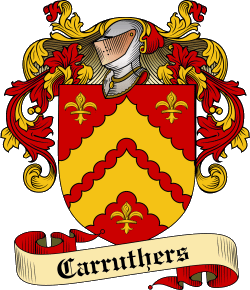|
|
Search

|
  Home Home
|
  Surname Surname
|
  First Name First Name
|
Popular Products

|
  Coat of Arms Coat of Arms
|
  Clan Badges Clan Badges
|
  Books & Gifts Books & Gifts
|
  Celtic Jewelry Celtic Jewelry
|
  Black Shirts Black Shirts
|
  CD Music CD Music
|
  Download Download
|
 Design Gallery
Design Gallery

|
  Irish Irish
|
  Flags Flags
|
  Celtic Celtic
|
  Tartans Tartans
|
  Scottish Scottish
|
  Claddagh Claddagh
|
  Surnames Surnames
|
  Highlander Highlander
|
  Celtic Radio Celtic Radio
|
Research

|
  History History
|
  Country Country
|
  Families Families
|
|
|
|
|
 Our catalog of products also includes three designer logos created specially by the Celtic Radio designers:
'Enjoy Life' Brand - Pigmented fun t-shirts with our 'Enjoy Life' logo. Stickers available too!
'StormCelt' Brand - Rugged wilderness outdoor wear for the true independent Celt.
'StormGale' Brand - Clothing products to keep you warm & dry when storm winds blow.
|
|
Our Heraldry Database has thousands of Family histories to search. Visit Now!
Graham

Coat of Arms
Despite a colourful tradition which asserts that Greme was a mighty Caledonian chief who broke the Antonine Wall driving the Roman legions out of Scotland, the likely origin of this family is Anglo–Norman; the Manor of Gregham, or Greyhome, is recorded in William the Conqueror’s Domesday Book. When David I came to Scotland to claim his throne, Graham was one of the knights who accompanied him. Sir.....
|
|
|
Heraldry Database: Carruthers
Carruthers

|
|


Surname: Carruthers
Branch: Carruthers
Origins: Scottish
More Info: Scotland
|
|
Background: Carruthers is a placeneme in Dumfriesshire which is said to derive from the Brittonic word "caer" meaning "fort" (as in Caerlaverock castle, not far away) and the personal name Ruther (originally Rhythr or Rydderch). It has been suggested that this comes from King Roderc mentioned by St Adamnan. Locally, the name was pronounced "Cridders".
In the 13th century, the family rose to be the hereditary stewards of Annandale under the Bruces. Nigel de Karruthers became Rector at nearby Ruthwell (see Ruthwell Cross ) and rose to become Canon of Glasgow Cathedral in 1351 and was chancellor to Robert, Steward of Scotland (progenitor of the Stewart monarchs).
A John Carruthers was keeper of Lochmaben Castle (pictured here) in 1446. This castle was at one time owned by the Bruces and may be where Robert the Bruce was born.
In the 16th century, the Carruthers were included in the list of unruly clans in the West Marches in 1587 by King James VI. Lands were acquired in Mouswald but this line ended when Simon Carruthers was killed in a border raid and the lands passed to the Douglases of Drumlanrig with the marriage of the Carruthers heiress.
The Carruthers of Howmains continued however, until the estate was lost in 1772 when financial disaster struck. But a younger son of the last laird acquired the estate of Dormont in Dumfriesshire which is still held by his descendants.
The surname is now mainly found in Glasgow and Edinburgh. Carruthers is a member of the Armigerous Clans and Families of Scotland ie it has a recognised coat of arms.
|
 Motto: Motto: Promptus et fidelis, Ready and faithful. Arms: Gules, two chevrons engrailed between three fleurs de lis Or. Crest: A seraphim volant Proper. View the Heraldry Dictionary for help.

The name arises in Dumfriesshire and appears to allude to an ancient British fort called Caer Rydderch or Rhythyr. Black asserts that this means ‘fort of Rydderch’, which appears to be a form of personal name. The family rose in the thirteenth century to be stewards of Annandale under the Bruces. Black narrates the career of Nigel de Karruthers, a cleric who was Rector of Ruthwell in 1380, rose to become Canon of Glasgow Cathedral in 1351, and was named as chancellor to Robert, Steward of Scotland, in 1344. The family around the same time acquired the lands of Musfald (now Mouswald). The Carruthers were included in the roll of unruly clans in the West Marches in 1587. In 1563 John Carruthers of Howmains was indicted, along with Edward Irvine of Bonshaw and several others, for an assault on Kirkpatrick of Closeburn and slaying several other sundry persons. The Mouswald line ended in Simon Carruthers who was killed in a border raid in 1548, and the lands passed to the Douglases of Drumlanrig by marriage to the Mouswald Carruthers heiress. The family of Howmains continued to prosper and their lands were erected into a free barony in 1542. The estate of Howmains was lost when financial disaster overwhelmed the family in 1772, but a younger son of the last laird had acquired the estate of Dormont in Dumfriesshire which the family holds to the present day. Lieutenant Colonel Francis Carruthers served in Egypt and in the Boer War, and was assistant director at the War Office from 1915 to 1919. He was a brigadier in the Royal Company of Archers (the monarch’s bodyguard in Scotland) and Lord Lieutenant of Dumfries.
Name Variations: Carruthers, Carothers, Carouthers, Carrothers, Carruther, Carruthirs, Carrutherys, Cridders, Gridders.
References:One or more of the following publications has been referenced for this article.The General Armory; Sir Bernard Burke - 1842.
A Handbook of Mottoes; C.N. Elvin - 1860.
Scottish Clans and Tartans; Neil Grant - 2000.
Scottish Clan and Family Encyclopedia; George Way of Plean and Romilly Squire - 1994.
Scottish Clans and Tartans; Ian Grimble - 1973.
World Tartans; Iain Zaczek - 2001.
Clans and Families of Scotland; Alexander Fulton - 1991.


Discuss
|
 Search
Search
|

Sign-up for a Founders account and receive personalized
family heraldry service and much more!

Want to know more?
Click the Heart!
|
|
|



